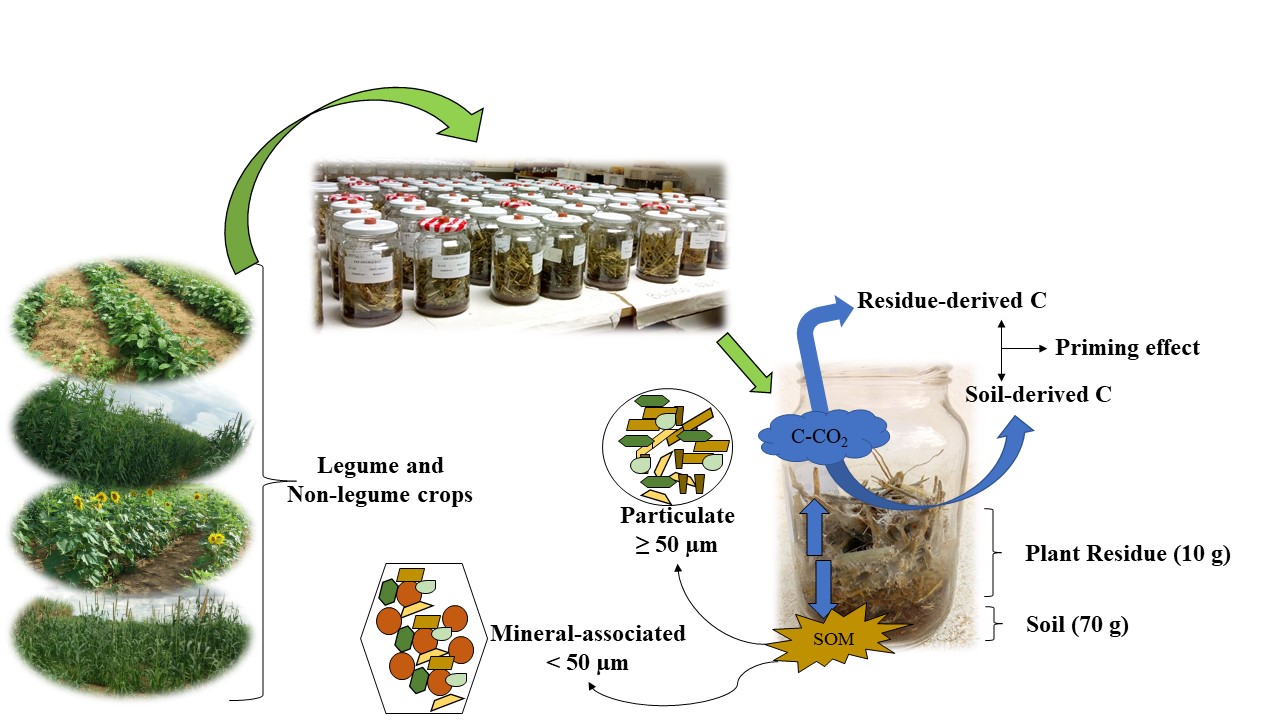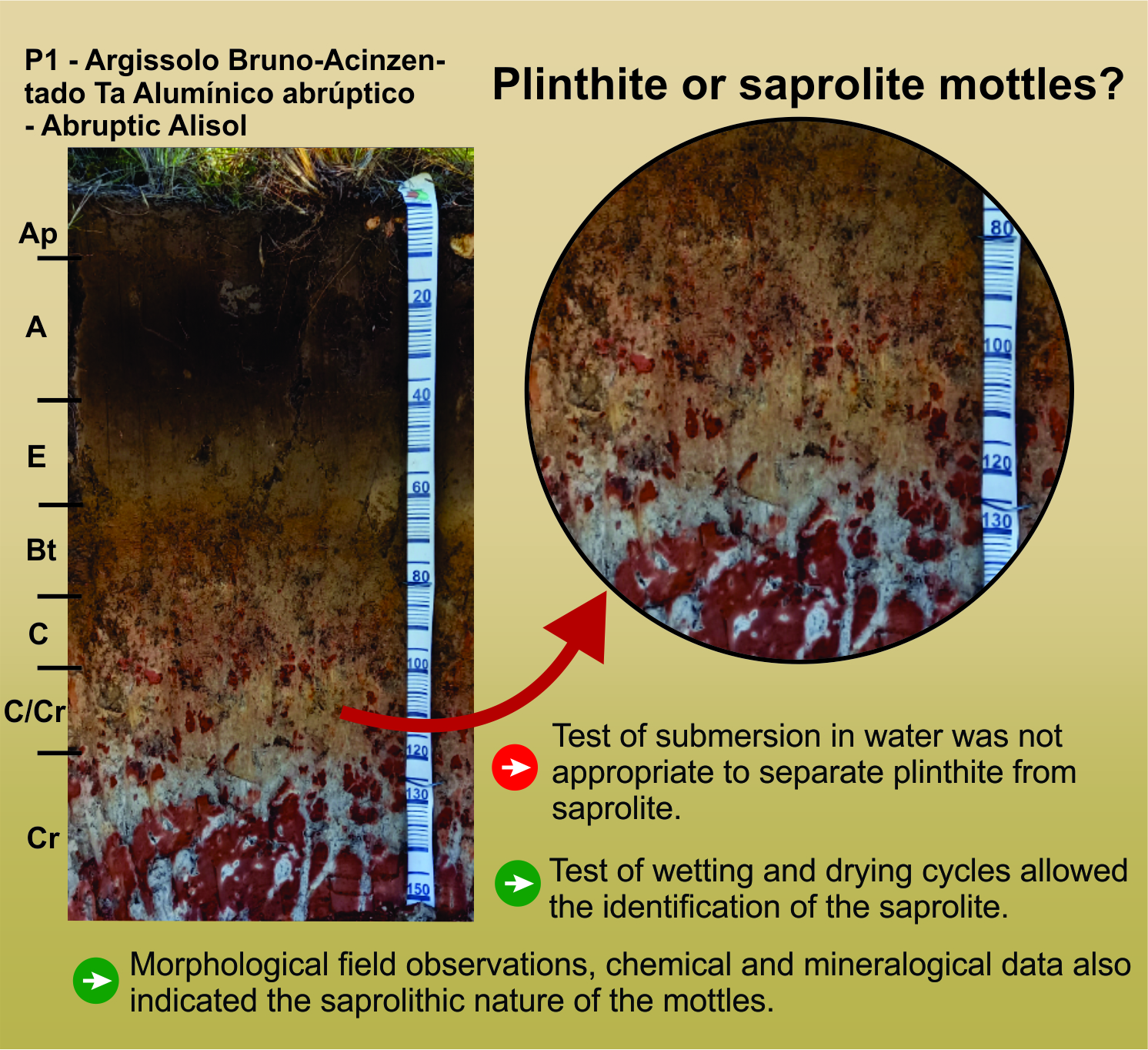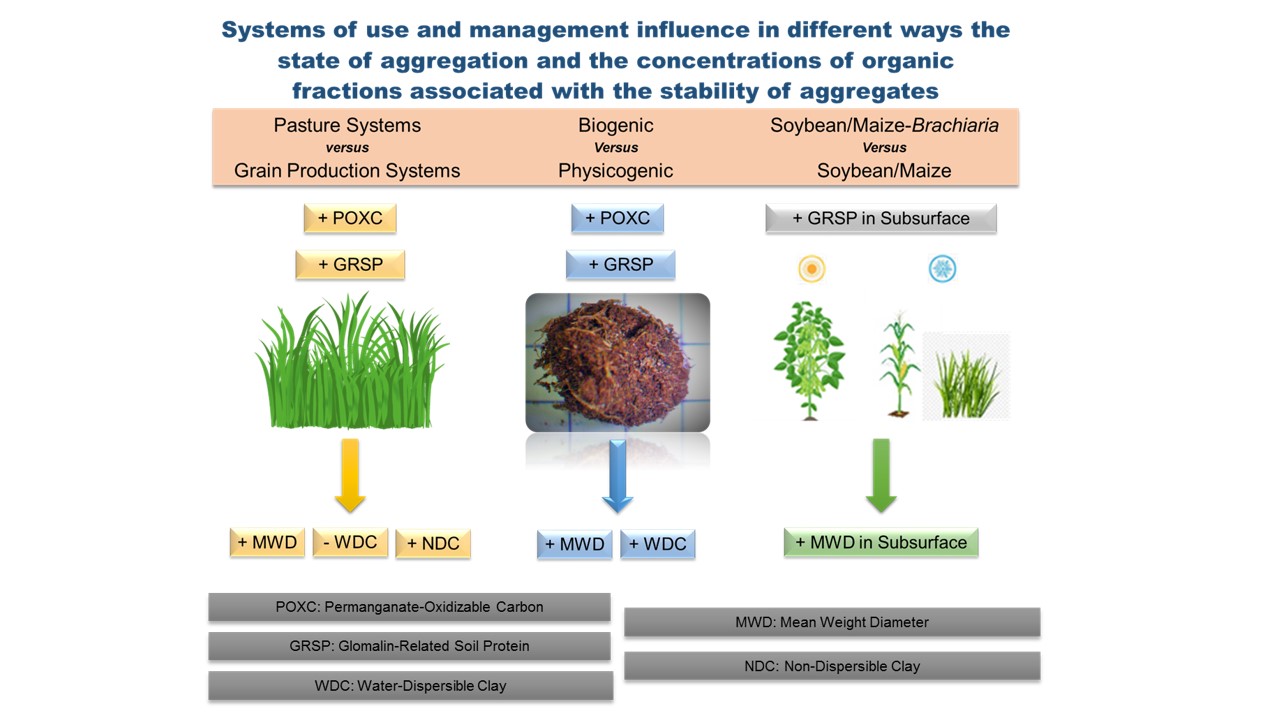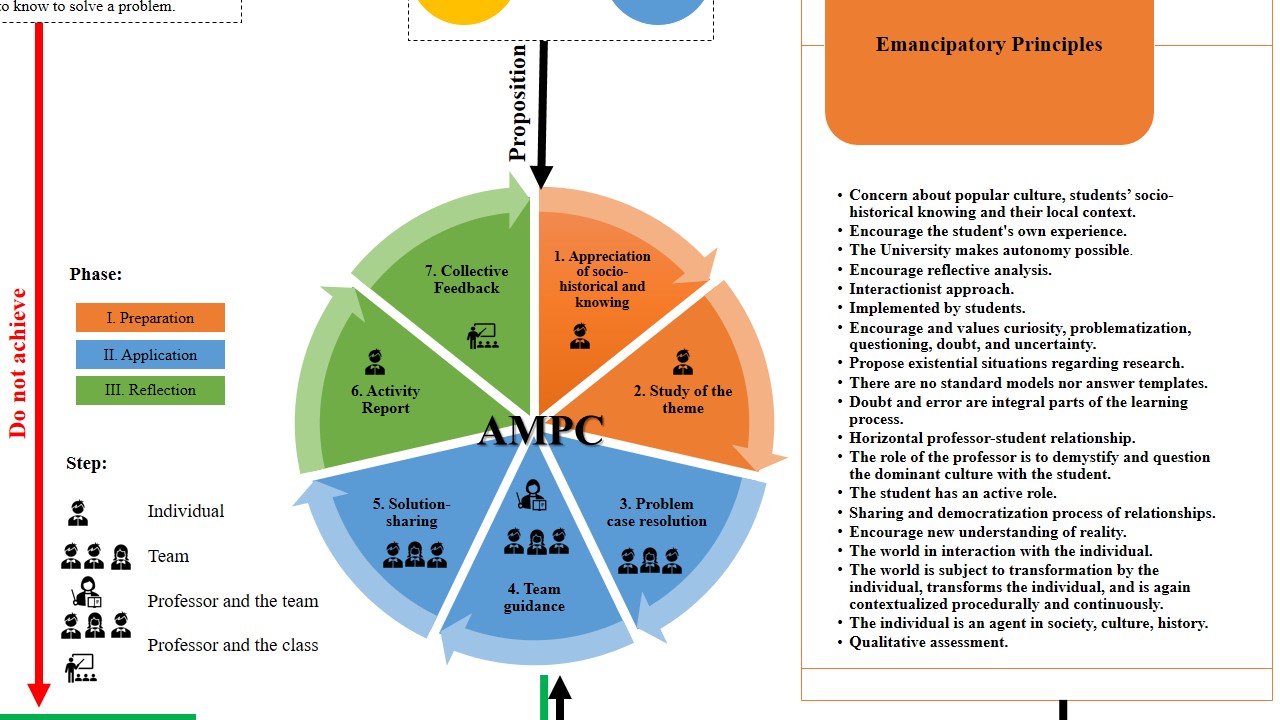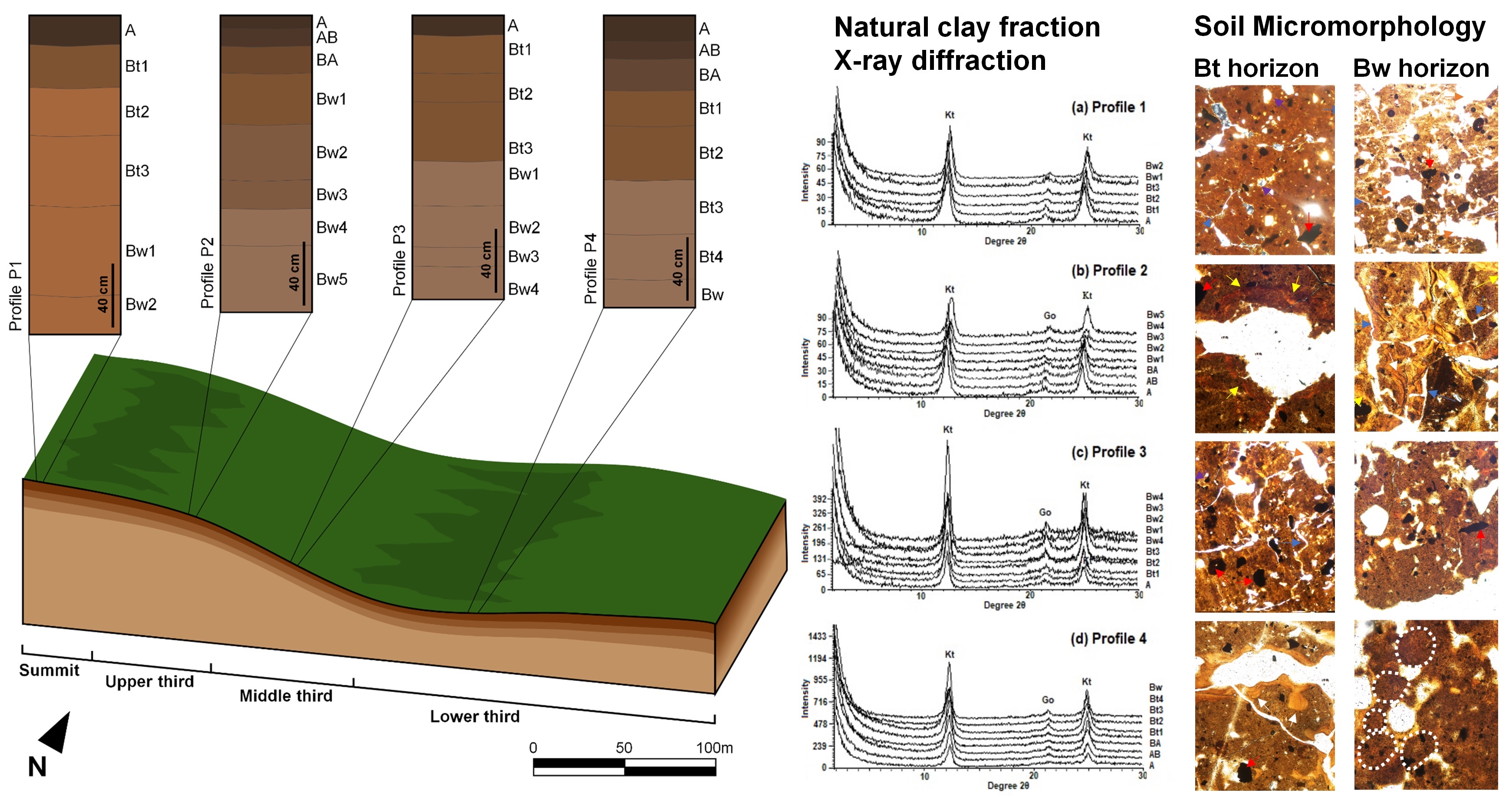A proposal to clarify the use of Sum of Bases in the Brazilian Remineralizer Regulation and in Soil Science
19/Jan/2023
ABSTRACT The term Sum of Bases has different meanings in Soil Science and the Remineralizer Regulations. This issue may cause misunderstandings in communication, particularly between the agricultural community and the mining community, becoming an obstacle to the advancement of the use of this soil amendment. In this scientific note we propose the use of subscript “R” (SBR), standing for Rock, in English, and Rocha, in Brazilian Portuguese, and “S” (SBS) standing for Soil in English and Solo in Brazilian Portuguese. […]
Combined legume and non-legume residues management improve soil organic matter on an Oxisol in Brazil
12/Dec/2022
ABSTRACT Understanding soil organic matter (SOM) dynamics in production systems on tropical soils is necessary to guide strategies to increase SOM formation. This study aimed to evaluate soil carbon (C) dynamics by combining applications of different plant residues used on tropical soils. An incubation study was carried out with and without adding millet (Pennisetum americanum) residues combined with six crop residues (legumes and non-legumes); and one additional treatment with only millet residue. Higher C-CO2 fluxes recorded in jack bean, sunflower […]
Identification of plinthite or saprolite residue in soils with high textural contrast in the southern Brazil
12/Dec/2022
ABSTRACT Soils classified as Alisols are very frequent in the sedimentary agricultural areas of southern Brazil. The presence of red mottles with morphology similar to plinthite and saprolite residue is very common in these soils, and its identification can be considered a difficult task, both in the field and in the laboratory. The incorrect identification of these redoximorphic features can affect soils’ taxonomic and technical classification. We aimed to compare morphological, physical, chemical and mineralogical data to identify reddish mottles, […]
Variations of soil bacterial microbial community and functional structure under different land-uses
12/Dec/2022
ABSTRACT To reveal the differences between land-use patterns and the changes in soil properties, the changes in soil bacterial microbial communities and functions driven by land-use patterns were studied by 16SrRNA Gene Fragments and its high-throughput sequencing, relying on the wetland, farmland and forestland soils in the Hongxing National Nature Reserve of Heilongjiang Province. The study area was slightly acidic soil, and the water content, soil organic carbon content, total soil nitrogen and phosphorus contents of wetland soil were higher […]
Inversion of soil moisture and its feedback on ecological restoration in arid and semi-arid areas of northwest China
12/Dec/2022
ABSTRACT Soil moisture (SM) plays an important role in regulating the global water cycle, especially in arid areas, and is one of the main indicators of ecological environmental health. Although traditional methods can accurately measure SM at a single sample site, they are limited in large-scale and dynamic SM monitoring. Therefore, we used the Landsat images as the data source and the soil adjusted vegetation index (SAVI) to build the adjusted SAVI (aSAVI) index by modifying the soil adjustment parameter […]
Base saturation is an inadequate term for Soil Science
12/Dec/2022
ABSTRACT Bases are chemical species that donate electrons, accept protons, or release hydroxyls (OH–) in aqueous solution. In Soil Science, “base saturation”, “exchangeable bases” or “basic cations” has been widely used to distinguish Ca2+, Mg2+, Na+, and K+ from H+ and Al3+ cations. This terminology is confusing since none of these cations are truly a base in chemistry sense. However, in the absence of the proposition of a correct term, the term “base saturation” remains in use nowadays, causing confusion […]
Stability, labile organic carbon, and glomalin of biogenic aggregates in sandy soils under management systems in the subtropical region of Brazil
21/Nov/2022
ABSTRACT Soil aggregates and their stability affect a wide range of soil properties. This study aimed to (a) verify whether biogenic aggregation provides higher macro- and microaggregate stabilization, and (b) evaluate whether biogenic aggregates are associated with higher labile organic carbon and glomalin contents. Three management systems were evaluated (permanent pasture, PP; no-tillage system, NT; and no-tillage + Brachiaria system, NT+B) as well as a reference area (Atlantic Forest biome vegetation, NF). According to their origin or formation pathway, the […]
Phosphorus lability in a subtropical Acrisol under long-term integrated crop-livestock system: impacts of grazing management and cropping system
28/Oct/2022
ABSTRACT Studies on lability of soil phosphorus (P) under integrated crop-livestock systems (ICLS) are still scarce, especially for deep soil layers (more than 0.20 m depth) and different managements in the crop and livestock phase. Distinct management in these phases may lead to a different distribution of soil P pools according to its lability (labile, moderately labile, less labile and residual) and, consequently, the P availability for plant nutrition. This study aimed to determine the soil P pools, by P […]
Alternative Methodology of Problem Cases – AMPC for soil education guided by emancipatory principles
28/Oct/2022
ABSTRACT Soil Education aims to give individuals a transforming formative process for conscious actions related to the soil in their life experiences in and with the world. As such, the educational methodologies addressing soil-related contents should be in dialogue with the purpose of this educational process. On the perspective of education for social transformation, it is recommended that professors of Higher Education avoid from pedagogical actions with traditional approaches, and start using other strategies and methodologies centered on students and […]
Genesis and transformation of basic rock-derived soils with shiny ped faces under tropical conditions
04/Oct/2022
ABSTRACT Soil evolves in landscapes in a natural process in which soil properties are gradually transformed. However, the transformation of argic to ferralic horizons in basic rock-derived soils under tropical conditions is poorly understood. Depending on the position of the soil profiles in landscape, evidence of pedogenetic transformation between different horizons might indicate the formation and destruction of aggregates with shiny faces. This study aimed to determine pedogenetic changes in basic rock-derived profiles in a toposequence, because soils derived from […]

